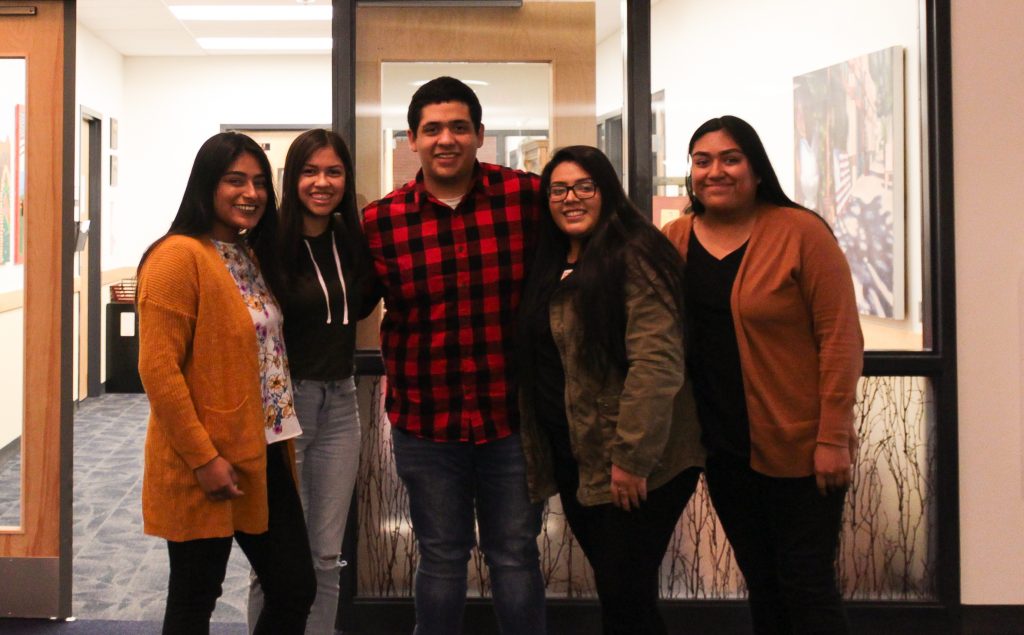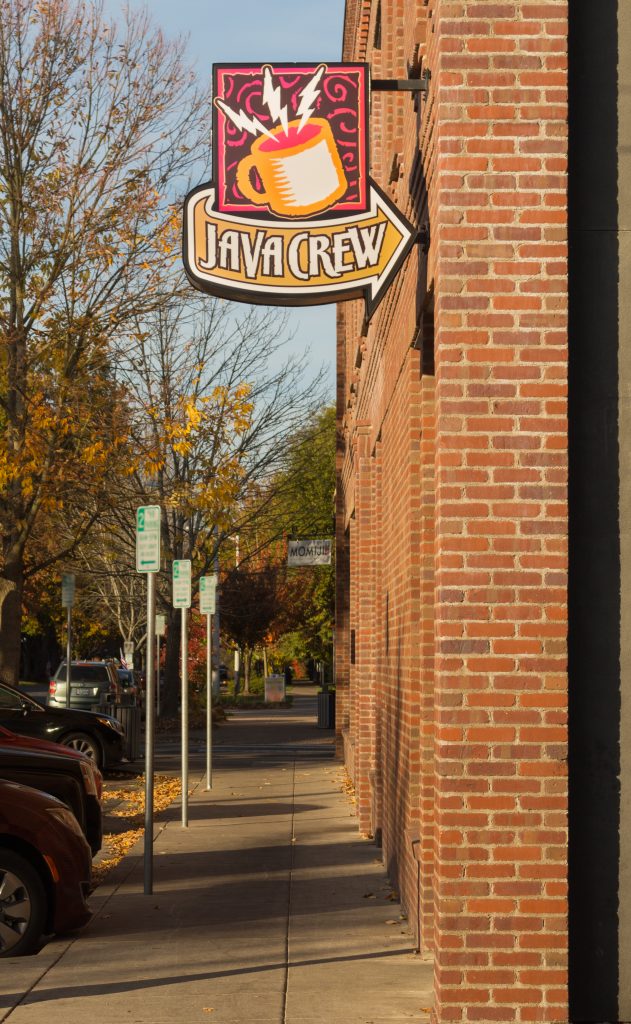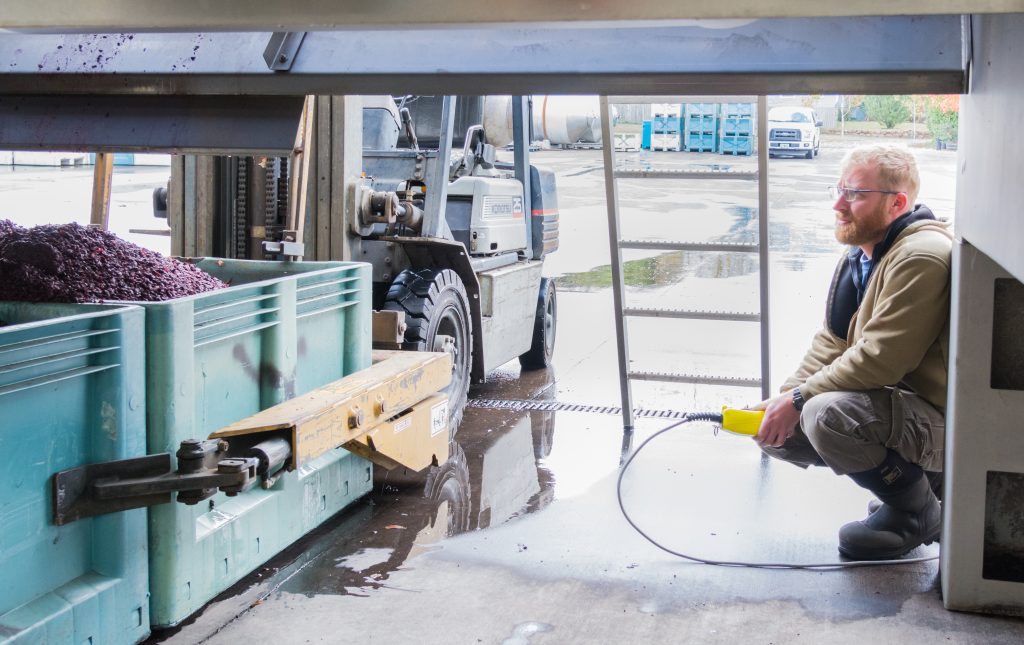
Rebecca Meyers | Lifestyle Editor
Located in the small town of Rickreall, just north of Monmouth and Western, is Eola Hills Wine Cellar. If the name sounds familiar, it’s may be because their bottles can be found in local stores alongside other names from the Willamette Valley. To find out more about this local winery, we had an interview and brief tour with winemaker Steve Anderson.
Standing just outside his office, the end of the hallway that leads to the large warehouse containing hundreds of barrels is just visible. Inside where we met, the space is more cozy; a regular office except the top of the walls are lined with medals.
My first questions had to do with the actual process of making wine, and how Anderson had become interested in it. The short version is simple: grapes are picked, pressed for the juice, and have yeast added which converts the sugars in alcohol through fermentation. Red wines are left with the solids for longer to keep the hue. Anderson’s years of experience have taught him that, in his words, “Happy yeast (means) happy wine.” Also, rather than a process of trial and error, he likes to call it “trial and success.”
His experience in winemaking stretches several years. Anderson can recall the exact date at which his official career in winemaking started — as he puts it, when he began getting paid for doing so — as well as earlier attempts. Anderson, who holds a degree from Oregon State University in horticulture, made his first wine as a teenager, inspired by stories of his elderly neighbors’ success at doing so.

“It wasn’t about making alcohol so much as a science project,” said Anderson. The result of said science project was about what one would expect from a first attempt at wine; it was sweeter than most and didn’t have the clear hue most wines have.
“Compared to what I make today, I would say it wasn’t very good, but my family and neighbors who tried it enjoyed it, so in that sense it was still a success.”
Before the tour of the actual cellar, Anderson told us a little about some of the awards hanging on the wall. Since its founding by Tom Huggins in 1982, the winery has acquired an impressive collection of awards. On one side are five identical ribbons, representing the five years in a row Eola Hills won at the Bite of Oregon event in Portland.
Directly inside the warehouse is where the barrels of wine are stored. Stacked high and labeled, the barrels wait to be shipped out around Oregon and California, the main markets of Eola Hills wine.
Like many other wine producers in the Willamette Valley, Eola Hills grows a lot of Pinot Gris and Pinot Noir. Anderson explains that they’ve sold wine in 24 states, but that doesn’t mean that those sales were necessarily large quantities and that the majority of their wines stay in the Pacific Northwest.
Further in, Anderson showed us where the fermentation happens. In the front are large vats containing the pressed grapes floating on their juice while they separate. The juice is then transferred into holdings where the yeast can ferment, and the solid parts of the grapes are recycled as compost for the rest of the grape plants, and the cycle completes.
Eola Hills will be hosting some events over Thanksgiving weekend. For more information about visiting, the wine and the team behind it, visit eolahillswinery.com.
Contact the author at howllifestyle@wou.edu
Photo courtesy of Paul F. Davis



 [fruitful_tabs type=”accordion” width=”100%” fit=”false”][fruitful_tab title=”Candied Yams or Sweet Potatoes”]This popular Thanksgiving side takes some time to cook, but the prep is fairly simple and only requires a few ingredients. Recipes vary, but the simple version can be made with only sweet potatoes, butter, brown sugar and marshmallows. The dish usually takes at least half an hour to cook if fresh sweet potatoes are used. [/fruitful_tab]
[fruitful_tabs type=”accordion” width=”100%” fit=”false”][fruitful_tab title=”Candied Yams or Sweet Potatoes”]This popular Thanksgiving side takes some time to cook, but the prep is fairly simple and only requires a few ingredients. Recipes vary, but the simple version can be made with only sweet potatoes, butter, brown sugar and marshmallows. The dish usually takes at least half an hour to cook if fresh sweet potatoes are used. [/fruitful_tab]




